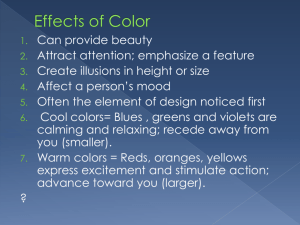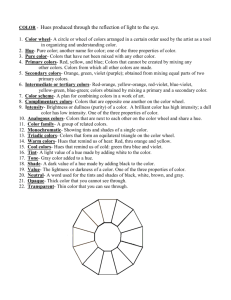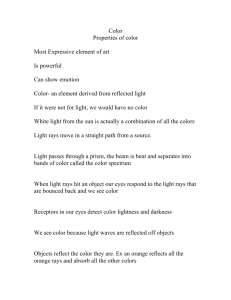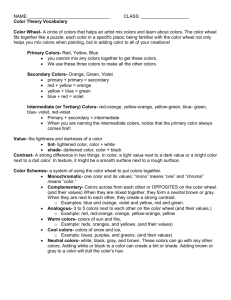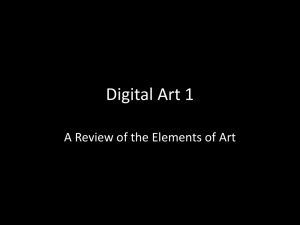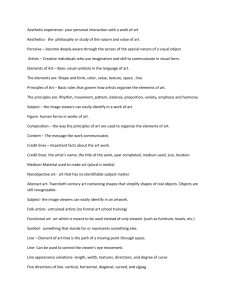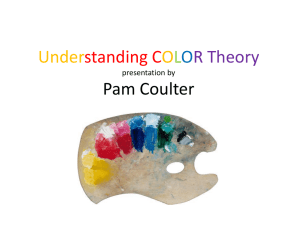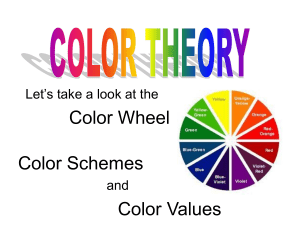Color Wheel PowerPoint
advertisement
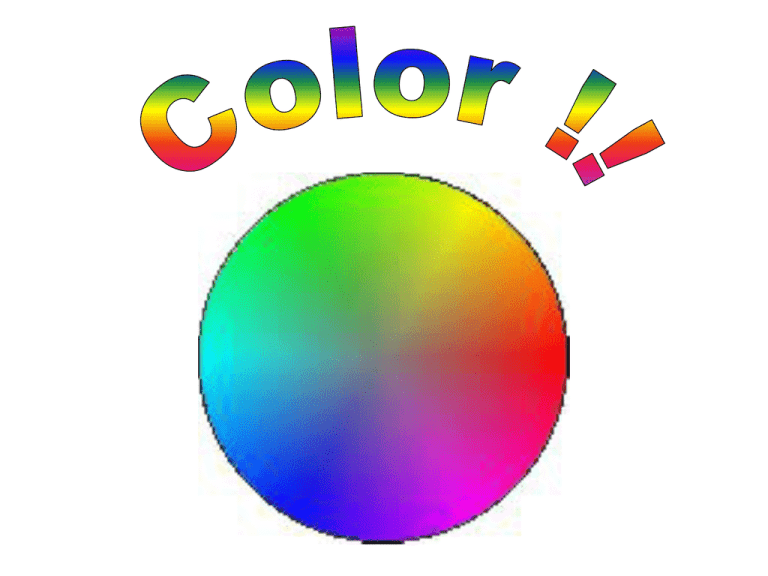
Color Terms Spectrum- the colors visible by the human eye, dispersed by a prism Hue- another word for color Primary colors- red, yellow, blue Secondary colors- green, orange, purple Intermediate colors- (tertiary) yellow-green, blue-green, blue-violet, red-violet, red-orange, yellow-orange Warm colors- on the left of the color wheel (yellow, orange, red) Cool colors- on the right of the color wheel (green, blue, violet) Neutral colors- white, black, brown, gray Value- the light or dark of a color Tint- adding black to a color Shade- adding white to a color Color Schemes color scheme- a combination of colors complementary- colors opposite each other on color wheel monochromatic- using one color plus black and white triadic color scheme- any three color equally spaced on a color wheel split complementary- combination of a hue with the wo colors beside of its complementary Color Schemes Warm Colors- on the left of the color wheel (yellow, orange, red) Vermeer, A Woman Asleep Cool Colors- on the right of the color wheel (green, blue, violet) Monet, Water Lilies Neutral Colorswhite, black, brown, gray Renior, Head of a Dog Frederic Church, Twilight in the Wilderness Complementary Color Scheme- colors opposite each other on color wheel Monochromatic Color Schemeusing one color/hue plus black and white Picasso, The Tragedy Analogous Color Scheme- colors that are beside each other on the color wheel Van Gogh, Vase with Fourteen Flowers Triadic Color Scheme- any three colors equally spaced on a color wheel Liechtenstein, Girl with Hair Ribbon Today's Assignment A Color Scheme Kaleidoscope Directions •Fold your square paper into eight slices •Select and label each color scheme on the back of each slice •Draw/trace 4-6 shapes in one of the slices •Fold and trace the shapes into the adjacent slice •Fill the slices with colors to complete the color schemes
